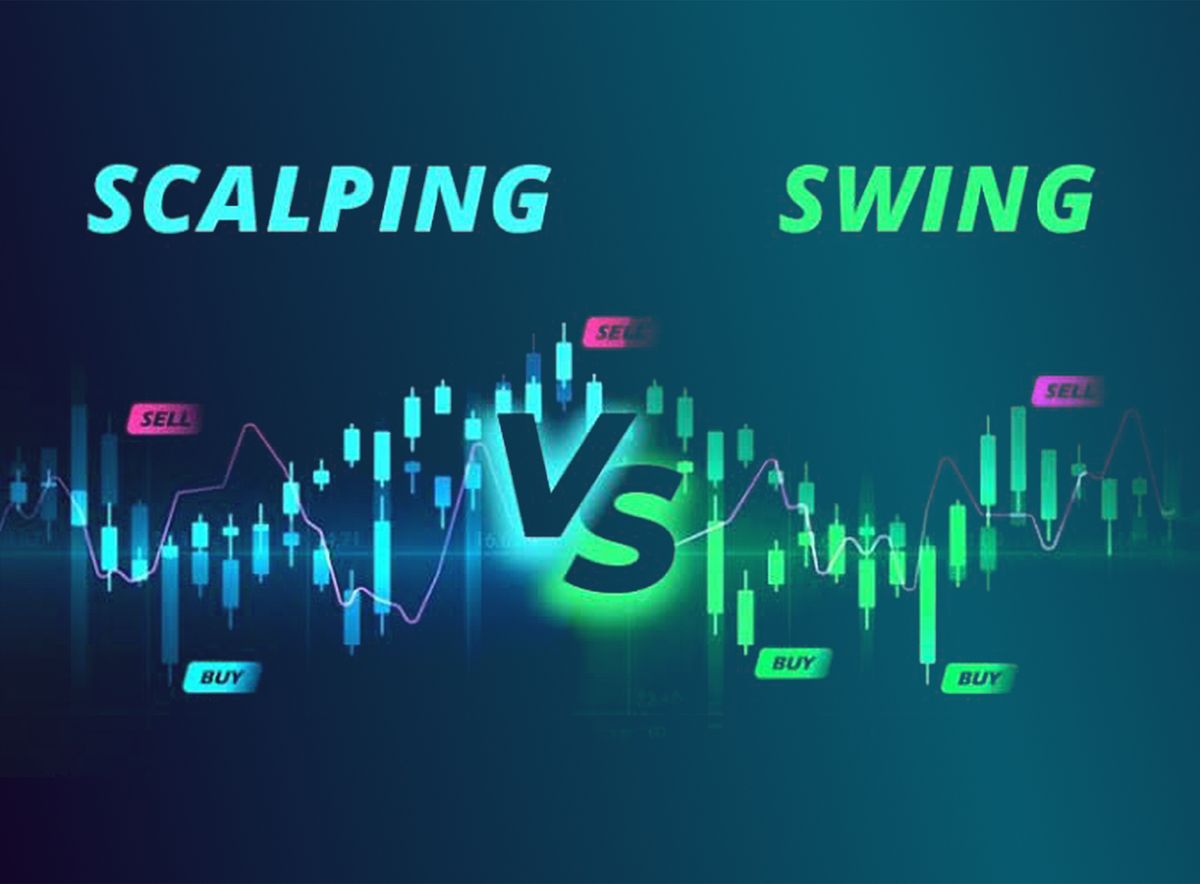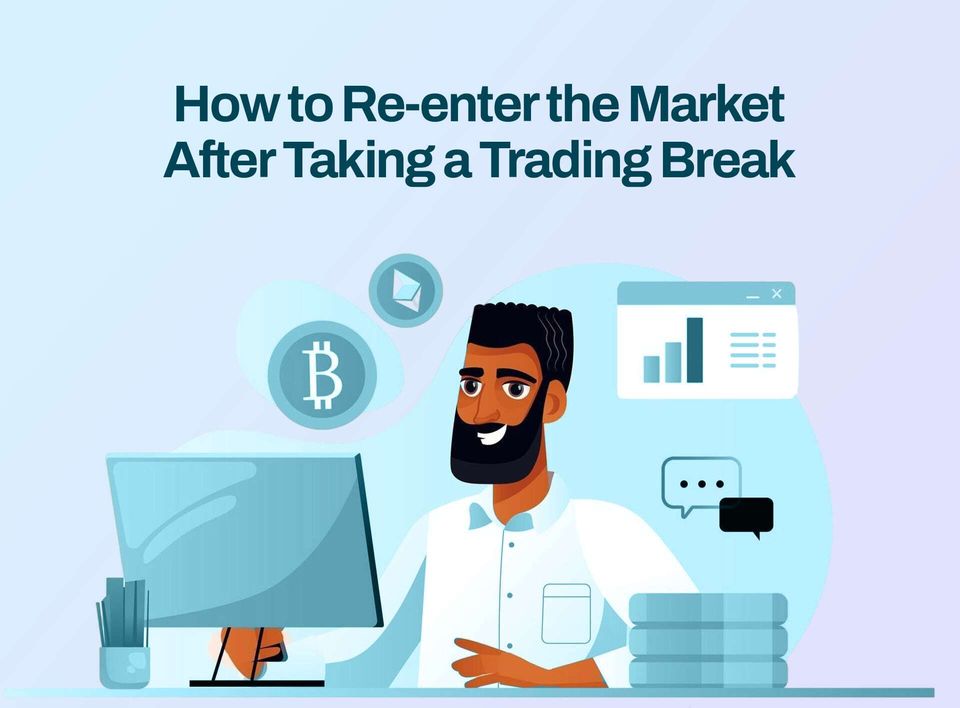Scalping vs. Swing Trading: The Pros and Cons
Scalping or swing trading? Learn the key differences, pros, and cons of each strategy to find out which one fits your crypto trading needs.

TABLE OF CONTENTS:
1. Introduction
2. What is Scalping in Crypto?
3. How Does Scalping Work?
4. Pros of Scalping
5. Cons of Scalping
6. What is Swing Trading in Crypto?
7. How Does Wing Trading Work?
8. Pros of Swing Trading
9. Cons of Swing Trading
10. Closing Thoughts
11. FAQs
In this article, we will analyse the pros and cons of scalping and swing trading to assist you in deciding which is the best for you, whether you are a seasoned trader or a crypto trading newbie.
What is Scalping in Crypto?
Scalping in crypto refers to a trading strategy where investors aim to make quick, small profits by taking advantage of short-term price fluctuations in the cryptocurrency market.
Scalpers execute numerous trades within a day, sometimes even within minutes, capitalising on minor price movements.
For instance, if Bitcoin's price goes up by $10, a scalper might buy and sell it a few minutes later, making a profit.
Statistics show that scalping can yield numerous small gains, but it requires constant attention to the market.
While it may seem lucrative, it's important to note that scalping involves high trading frequency, which can lead to increased transaction costs and potential stress. It's a strategy that demands quick decision-making and a keen eye on market trends, making it suitable for those with a knack for rapid, short-term trading.
How Does Scalping Work?
To understand how scalping works, let's break down the process step by step.
1. Quick In and Out: Scalpers enter and exit trades swiftly, often holding positions for just a few seconds to a few minutes. They look to profit from even the tiniest price changes.
2. Leveraging Small Price Movements: Scalpers target small price changes in a stock or currency pair. For instance, if a stock is priced at $100, a scalper might aim to profit from a $0.10 movement. This may seem small, but it can add up with large volumes.
3. High Volume Trading: Scalping involves trading large volumes of assets. The idea is to accumulate profits from the sheer quantity of trades rather than relying on significant price changes. For example, a scalper might make dozens or even hundreds of trades in a single day.
4. Technical Analysis Tools: Scalpers rely heavily on tools like charts, indicators, and real-time data feeds. These tools help them identify short-term trends and potential entry and exit points.
5. Tight Stop-Loss Orders: Scalpers use tight stop-loss orders to manage risks. If a trade is going against them, these orders automatically exit the position to limit losses.
Now, let's look at some specific techniques that scalpers use:
A. Spread Trading: Scalpers take advantage of the bid-ask spread—the difference between the buying and selling prices. They aim to profit from the narrowing or widening of the spread.
B. Time and Sales Analysis: Scalpers closely monitor the Time and Sales data, which shows real-time transaction information. This helps them evaluate market momentum and make quick decisions.
C. Level II Quotes: Scalpers use Level II quotes to see the current bid and ask prices and the size of orders at different levels. This information assists in predicting short-term price movements.
D. Tape Reading: Scalpers engage in tape reading, analysing the flow of trades as they occur. This helps them identify buying or selling pressure in the market.
Pros of Scalping
1. Quick Profits: Scalping in crypto allows traders to capitalise on short-term price movements, aiming for quick and frequent profits. Scalping is similar to buying low and selling high within the span of a few minutes, making small but consistent gains. This quick turnaround appeals to those who enjoy the thrill of swiftly pocketing gains in a dynamic market.
2. Lower Risk Exposure: With scalping, traders open and close positions swiftly, reducing the time their funds are exposed to market fluctuations. This can be especially beneficial in the unstable crypto market, where prices change rapidly.
3. Utilising Market Liquidity: Scalping thrives on liquidity – the ease of buying or selling an asset without causing a significant price change. Scalpers thrive in liquid markets, where they can enter and exit positions smoothly, taking advantage of even small price differentials.
4. Adaptability to Market Conditions: Crypto markets are like a rollercoaster ride; unpredictable. Scalping allows traders to adapt quickly to these changes – scalpers can switch strategies swiftly, making them more flexible in responding to the market's twists and turns.
5. Accumulating Small Gains into Significant Profits: While each scalped trade may yield only a small profit, these gains accumulate over multiple trades. Scalping relies on the power of consistency, with traders aiming to turn many small wins into a notable overall profit.
Cons of Scalping
1. High Transaction Costs: Scalping involves making numerous trades within a short period, often taking advantage of small price movements. This frequent buying and selling can lead to substantial transaction costs, eating into potential profits. For instance, if you're trading a cryptocurrency with a 0.1% fee per transaction. If you make 50 trades daily, your costs could significantly increase, affecting your overall gains.
2. Stress and Time-Intensive: Scalping demands constant attention to the market, as traders need to seize fleeting opportunities. This constant vigilance can be stressful and time-consuming, especially for those who have other commitments. Imagine trying to scalp while working a full-time job; it will be like juggling multiple balls in the air, risking burnout and potential mistakes due to fatigue.
3. Limited Profit Margins: Although scalping aims for small, frequent gains, it also comes with limited profit margins. To illustrate, if you're aiming for a 1% gain on each trade, a sudden 2% price drop can wipe out two successful trades' profits. While consistent gains are the goal, the narrow profit margins can make recovering from unexpected market fluctuations challenging.
4. Emotional Strain: Scalping requires quick decision-making, leaving little room for emotional control. The emotional toll can be substantial when a trade doesn't go as planned. I mean, have you ever witnessed the price of your chosen cryptocurrency drop rapidly just after you purchased it? The emotional strain of quick, successive trades can lead to impulsive decision-making, potentially increasing losses.
5. Technology Dependency: Successful scalping relies heavily on technology, including fast and reliable internet connections and advanced trading platforms. Technical glitches or internet outages can be disastrous during a scalp, leading to missed opportunities or even losses.
That’s it for Scalping! Now, let’s talk about Swing Trading.
What is Swing Trading in Crypto?
Swing trading in crypto involves buying and holding cryptocurrencies for a short to medium term, typically from a few days to several weeks, in order to profit from price fluctuations. Unlike day trading, which involves making multiple trades within a single day, swing trading allows investors to take advantage of price movements over a slightly longer period.
For example, let's say you notice that the price of Bitcoin has been fluctuating between $30,000 and $40,000 over the past few weeks. As a swing trader, you might buy Bitcoin when it's closer to $30,000 and sell it when it reaches $40,000, capturing the profit in between.
How Does Swing Trading Work?
The basic idea behind swing trading is to identify and capitalise on 'swings' or price fluctuations that occur as a result of market trends. Here's a simple breakdown of how swing trading works:
1. Identifying Trends: Successful swing trading begins with recognising trends in the market. Traders use technical analysis tools, such as moving averages or trendlines, to identify the overall direction in which a particular asset is moving.
2. Entry Points: Swing traders look for opportune entry points to open positions. This often involves identifying potential reversals or corrections within the larger trend. Key technical indicators like the Relative Strength Index (RSI) or Moving Average Convergence Divergence (MACD) can be used to identify ideal entry levels.
3. Setting Stop-Loss and Take-Profit Levels: To manage risk, swing traders set specific levels for stop-loss and take-profit orders. Stop-loss orders help limit potential losses, while take-profit orders ensure that profits are secured at prearranged levels.
4. Holding Period: Unlike day traders, swing traders hold their positions for a more extended period. The goal is to capture a significant part of the price movement within the identified trend.
5. Risk Management: Effective risk management is crucial in swing trading. Traders often adhere to the 2% rule, meaning they don't risk more than 2% of their trading capital on a single trade.
6. Market Analysis: Continuous market analysis is necessary for successful swing trading. Traders stay informed about economic indicators, news, and other factors that may impact the market and their positions.
7. Exit Strategies: Knowing when to exit a trade is as important as entering it. Traders use various methods, such as trendline breaks or specific technical indicators signaling a trend reversal, to decide when to close a position.
Pros of Swing Trading
1. Profit Potential: Swing trading in crypto offers substantial profit potential for traders. Unlike day trading, where positions are opened and closed within the same day, swing trading allows traders to capture larger price movements over a few days to weeks. This longer timeframe enables participants to ride the trend and potentially take advantage of significant price swings, providing them with the potential to catch substantial upward movements, resulting in more significant profit margins.
2. Reduced Stress: One notable advantage of swing trading in crypto is the reduced stress compared to day trading. Day trading demands constant attention to the market, with rapid decision-making and quick executions. On the contrary, swing trading provides a more relaxed approach as traders have the flexibility to make decisions over a more extended period. This can be particularly beneficial for those with other commitments, such as a full-time job, as they can manage their trades without the pressure of constant monitoring.
3. Avoiding Intraday Instability: Swing trading helps traders dodge the intense instability experienced within the day in day trading. Cryptocurrency markets are known for their rapid and unpredictable price movements within short timeframes. Swing trading allows traders to take advantage of broader trends while avoiding the noise and fluctuations that are part of intraday trading. This approach is especially useful for those who may be sensitive to sudden market swings, providing a more stable and predictable trading environment.
4. Time Efficiency: Swing trading can be more time-efficient compared to day trading. While day traders need to be glued to their screens for the entire trading day, swing traders can analyse the market, execute trades, and manage their positions in a more relaxed manner. This flexibility allows individuals to participate in the crypto market without the need for constant attention, making it a practical option for those with busy schedules.
5. Lower Transaction Costs: Compared to frequent trading strategies like scalping, swing trading typically attracts lower transaction costs. Since swing traders execute fewer trades over longer timeframes, they can avoid excessive fees associated with frequent buying and selling. This can help maximise overall profitability and reduce the impact of transaction fees on trading performance.
Cons of Swing Trading
1. Instability Risks: Swing trading in cryptocurrency exposes investors to significant instability risks. Cryptocurrency markets are notoriously unstable, with prices fluctuating dramatically within short periods. Such instability can result in substantial losses for swing traders if they misjudge market movements.
2. Highly Speculative Nature: Crypto swing trading is naturally speculative, relying on the anticipation of price movements based on technical analysis or market trends. Unlike traditional financial markets, the cryptocurrency space lacks regulatory oversight and fundamental metrics that could provide a more stable basis for investment decisions. Consequently, swing traders often face heightened uncertainty and risk, as their strategies rely heavily on speculation rather than concrete data.
3. Market Manipulation: Cryptocurrency markets are vulnerable to manipulation due to their relatively low liquidity and fragmented nature. Whales, or large investors, can strategically buy or sell significant amounts of cryptocurrency to manipulate prices in their favour, triggering false signals for swing traders. Instances of pump-and-dump schemes, where prices are artificially inflated before being dumped, are not uncommon in the crypto space. Such market manipulation can lead to substantial losses for swing traders who fall victim to these schemes.
4. Psychological Stress: Swing trading in cryptocurrency can be emotionally and psychologically taxing. The constant monitoring of price movements, the pressure to make timely decisions, and the fear of missing out (FOMO) on potential profits can take a toll on traders' mental well-being. Moreover, experiencing losses or unexpected market downturns can induce anxiety and stress, impacting traders' decision-making abilities and overall quality of life.
5. Lack of Regulation and Security: The crypto market operates in a largely unregulated environment compared to traditional financial markets. While this lack of regulation offers greater freedom and accessibility to traders, it also exposes them to higher levels of risk. Instances of fraud, hacking, and security breaches are prevalent in the crypto space, with several exchanges experiencing thefts of millions of dollars' worth of digital assets. Consequently, swing traders may face the constant threat of losing their investments due to security vulnerabilities or fraudulent activities within the ecosystem.
Closing Thoughts
Both scalping and swing trading offer unique advantages and drawbacks, catering to different trading preferences and risk tolerances. It is crucial for traders to carefully evaluate their goals, time commitment, and risk appetite before choosing a strategy that aligns with their financial objectives.
FAQs
Q1. Which strategy is more suitable for beginners - scalping or swing trading?
A1. Beginners often find swing trading more manageable due to its lower frequency of trades and less stressful nature.
Q2. What is the minimum capital required for scalping and swing trading?
A2. Scalping typically requires a larger capital due to the need for more significant position sizes, while swing trading can be started with a smaller capital.
Q3. Can I combine both scalping and swing trading in my portfolio?
Q4. Yes, some traders adopt a hybrid approach, using scalping for quick gains and swing trading for more extended market trends.
Q4. How do transaction costs affect overall profits in scalping?
A4. Transaction costs play a more significant role in scalping, as frequent trades can accumulate higher fees over time.
Q5. Is technical analysis more crucial for scalping or swing trading?
A5. Technical analysis is essential for both strategies, but scalping relies more on intraday price movements, while swing trading incorporates a broader market perspective.
Q6. What is the typical holding period for swing trading positions?
A6. Swing traders usually hold positions for several days to weeks, depending on the identified market trend.
Q7. Can scalping be automated using trading algorithms?
A7. Yes, many traders use automated algorithms for scalping, as it requires quick and precise execution.
Q8. How do market conditions affect the choice between scalping and swing trading?
A8. Unstable markets may favour scalping while trending markets are more conducive to swing trading.
Q9. Do I need to monitor the markets constantly when scalping?
A9. Yes, scalping requires constant monitoring and quick decision-making, making it more time-consuming than swing trading.
Q10. Which strategy is more profitable in the long run - scalping or swing trading?
A10. Profitability depends on various factors, including the trader's skill, market conditions, and risk management. Some traders succeed in one strategy over the other, while some combine both for a diversified approach.
Disclaimer: This article was written to provide guidance and understanding. It is not an exhaustive article and should not be taken as financial advice. Obiex will not be held liable for your investment decisions.




